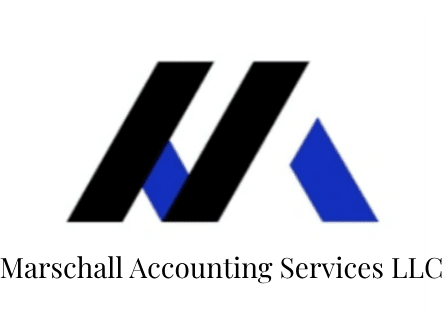Article: 1099-K Subcontractor and Gig Income

Important Tax Information
Jessica I. Marschall, President Marschall Accounting Services LLC
May 30th, 2022
n early 2022, many people received 1099-K forms from companies such as Venmo, Paypal or other Payment Settlement Entities (PSE). These forms report total funds received through the PSE platform. They do not always translate into taxable income but can flag potential subcontractor income not reported to the IRS.
Background: Subcontractors vs. Employees
As a refresher, a company chooses to pay workers as either employees or subcontractors. Over the past five years, the IRS has cracked down on companies paying subcontractors who should be classified as employees. To pay a subcontractor, employers collect Form W9[1]from the contractor and keep track of payments made to them throughout the tax year. If subcontractors are paid $600 or more, employers are required to electronically file a 1099 by January 31st of the following year.
Pros to Having Subcontractors vs. Employees:
1. An employer does not owe payroll taxes or FICA for subcontractors, which includes Medicare at 2.9% and Social Security at 12.4%. If paying a subcontractor, the combined 15.3% must be paid by the subcontractor. If paying an employee, the employer must cover ½ of both Medicare and Social Security, while the employee pays the other half. Additionally, both federal and state unemployment taxes must be paid by the employer for an employee but not for a subcontractor.
2. The subcontractor cannot make unemployment claims if their contract is terminated.
3. The employer is not required to offer benefits or paid time off to a subcontractor but must, in some cases, for an employee.
4. Subcontractors have the benefit of choosing how, when, and where to complete most work under a true subcontractor relationship.
5. Subcontractors can procure additional outside work that they might be precluded from taking as an employee.
Cons to Subcontractors:
Most of the cons apply to subcontractors only.
1. Subcontractors are assessed that wonderful Self-Employment Tax surprise when filing their individual 1040s. Said surprise is the additional FICA tax of 15.3% on subcontractor earnings as detailed above. This is not reduced by the Standard or Itemized Deduction. It is always a hefty hit for clients and typically unexpected.
2. Subcontractors need to pay in estimated taxes to both federal and state taxing authorities (if state tax is applicable). Federal and most state taxation is a pay-as-you-go system, requiring estimated tax payments to be made as money is earned. These payments are due on the following dates and must be estimated based upon the taxpayer’s effective or average tax rate:
a. First Quarter 4/15 (always a fun payment to make on the same day as taxes are due)
b. Second Quarter 6/15 (another fun one, just two months after the last)
c. Third Quarter 9/15 (at least there is a three-month gap here)
d. Fourth Quarter 1/15 of the following year (there is a four-month gap here, but it falls right after typical high holiday spending.)
90% of taxes must be paid in by 1/15 or an estimated tax underpayment penalty is assessed at the federal and sometimes state level. However, the IRS makes it easy to pay these taxes and can be paid through this website: https://www.irs.gov/payments/direct-pay
Please remember that the taxes are at the individual level in most cases. This applies to LLCs, partnerships, and S-Corps. Only C-Corps pay in at the corporate tax level.
3. Subcontractors often rack up work that is well over 40 hours a week but have no access to employment benefits such as health insurance, 401(k) plans, pension plans, childcare benefits, tuition reimbursement, or vacation or sick leave
The IRS uses the Duck Test to determine if a subcontractor should be classified as an employee: Looks, walks, or quacks like a duck…it is a duck. If the employer has full control over working hours, the subcontractor regularly works 40+ hours, and the employer provides all equipment for working, the subcontractor should be classified as an employer. Should the IRS determine there was a misclassification, they will impose a fine to the employer including the following:
Back to the 1099-K
The filed 1099-K aims to catch offending companies and subcontractors from not reporting 1099 income and consequently, not paying self-employment, federal, and state taxes. Under the American Rescue Plan Act of 2021 (ARPA), the earnings threshold for 1099-Ks was lowered from $20,000 to $600 for PSEs. This was a direct result of the Gig Economy and many taxpayers not reporting this income. Here is a great article on the changes:
I could write 25 pages on what these various taxes fund, but it is sufficient to say that the IRS is losing millions of dollars in revenue in unpaid taxes. According to this article from the NY Times, the IRS commissioner Charles Rettig states that the US Government is losing $1 trillion in unpaid taxes each year, with the major offenders being wealthy and large corporations.
Does this mean that paying friends through Venmo for dinners out or going in on gifts will be taxed? No. But, if making greater than $600 as either a subcontractor or in the Gig Economy, claim the revenue on your 1040.
Where to Report 1099 Earnings
A subcontractor can report earnings on the 1040 Schedule C. This automatically calculates additional self-employment taxes and allows for deductions. As stated earlier, these taxes are painful. However, there are some great deduction write-offs afforded subcontractors that are not available to employees:
1. Mileage: Keep a contemporaneous log of miles driven for work. The current rate is 58.5 cents per mile. This adds up quickly. There are easy and free mileage tracking apps.
2. Office supplies
3. Computer equipment
4. Home Office Deduction, standard or actual
5. Advertising and marketing
6. Meals for business purposes deducted at 50%
7. Uniforms
8. Travel hotel and transportation
9. Subcontractor expenses
10. Commissions
11. Rent or leases for business purposes
12. Repairs and maintenance
13. Taxes and licenses
14. Dues and subscriptions
Review the Schedule C below for the IRS classifications for expenses found here:
Expenses that are NOT deductible and can easily be lost in an audit include:
1. Entertainment
2. Wardrobe, only necessary uniforms are deductible like those worn by restaurant workers, artists, construction, etc.
3. Dry-cleaning
4. Meals with friends or family
5. Groceries for home use
6. Personal and family expenses
7. Club memberships
There are too many non-deductible expenses to list. When in doubt, conference with a CPA. Speaking of CPAs, unless running a very simple Schedule C subcontracting business, clients benefit greatly from working with a CPA.
Be Honest
The bottom line to all subcontractor, employee, employer, and related tax issues is to be honest.
- Employers must properly classify employee vs subcontractor
- Subcontractors must accurately report all self-employment earnings
Audits are Expensive, Time Consuming, and an Emotional Headache
Our firm often contracts with clients needing representation during an audit. The process often takes many months to resolve. The fines, penalties, and late fees are immense. Ensure taxes are filed completely and accurately and all taxes are paid. If that simple advice is followed, an audit or review can often be resolved with a single written correspondence offering substantiating evidence for all income and expenses.
Contact our firm for more information and CPA consultation and tax preparation services:
Facebook:
LinkedIn:
(414) 217-0147




